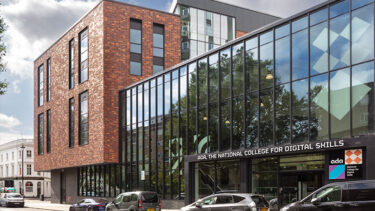Higher education is a fast paced sector and one that is kept on its toes by an ever-changing landscape – be it due to changes in politics, trends in undergraduate and postgraduate studies, evolving demands of domestic and global job markets or changes to funding.
Staying on top of all the factors affecting universities and their associated campuses while remaining competitive is no mean feat but it is one that has become increasingly essential in the past decade.
In its many years of working with the higher education (HE) sector, Wates has developed a profound understanding of what is needed when it comes to investing in HE estates. In essence, the vision is simple; to be successful, universities must reflect their academic excellence in their physical estates. However, the reality is far more complex. No university is the same. A combination of history, specialism and ambition make them nuanced. Understanding this is the key to helping our clients diversify their campuses to offer a wider range of courses.
In 2011, Wates was appointed to build the first phase of The University of Southamptons new Boldrewood Innovation Campus, a project that led to our appointment to subsequent phases of what has become the new home of the universitys faculty for maritime engineering and engineering sciences. Being entrusted with each evolving phase of this ambitious investment programme is due to our understanding of the universitys vision for the campus. We spent considerable time understanding the needs of the university, its faculty and students and in doing so we have been able to take their aspirations and bring them to life, in-turn enabling them to diversify in an extremely competitive subject areas.
It is this need to remain competitive that has been the most significant development in the past ten years. In 2012, Wates conducted a survey to understand the estates strategies of the UKs universities against a backdrop of tuition fee reforms. Making the University Work For You found that 93% of universities planned to invest in new learning and research facilities in order to maintain an edge in competition for students. Now six years later, the UK HE sector certainly seem to have put its money where its mouth is. Furthermore, Wates research found that 73% of universities planned to foster greater collaboration with businesses through the creation of innovation hubs and shared space for education and commerce. I for one am very glad to see partnerships of this nature on the rise; they have become yet another means by which the HE sector can add value and evolve.
Of course, by its nature, diversifying is an ongoing process and new and emerging challenges will continue to present themselves to the UKs universities, as changes in the global job market continue to influence demand for different types of skills. What is extremely important is that these new challenges are embraced, understood and addressed and the construction industry has an important part to play in ensuring that the vision for the future of university estates is realised.



